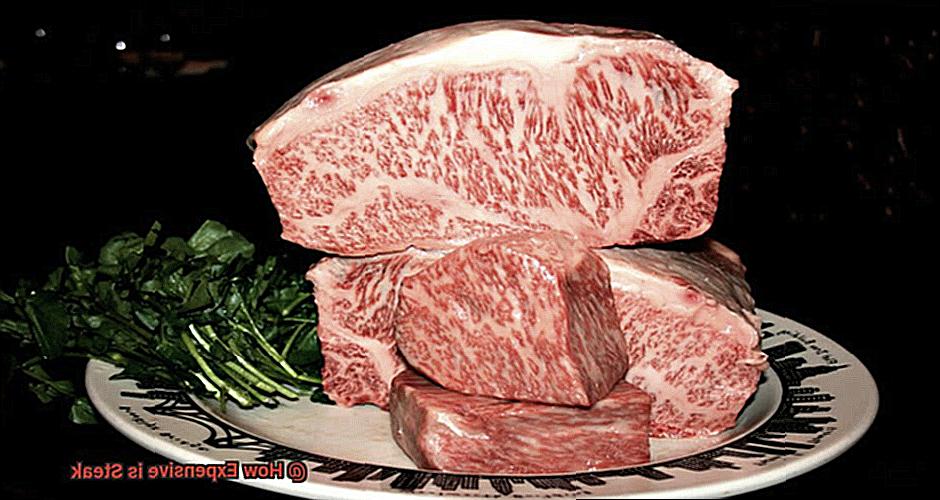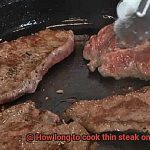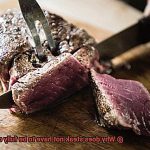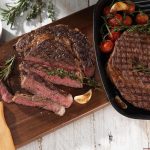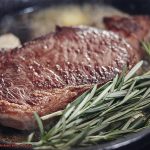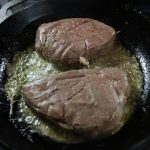Calling all meat lovers. Are you someone who can’t resist a juicy, tender steak? Do your eyes light up at the thought of a perfectly cooked prime ribeye? If so, you’ve probably found yourself wondering: just how expensive is steak?
Well, the answer isn’t as straightforward as a simple price tag. There are numerous factors that can impact the cost of your beloved meat, from the cut to where you purchase it.
But fear not. We’ve compiled a comprehensive guide that delves deep into the world of steak pricing. In this blog post, we’ll explore what causes steak prices to fluctuate and identify which cuts of meat are the most expensive. Plus, we’ll share some money-saving tips for those on a budget.
Whether you’re an experienced steak connoisseur or just starting to appreciate a good cut of meat, this article is for you. Get ready to tantalize your taste buds and discover just how much you should be paying for a delicious steak dinner. So sit back, relax and prepare to feast on all the juicy details about one of America’s favorite foods.
Contents
What Factors Impact the Price of Steak?
The price of steak can be steep, but understanding the factors that impact pricing can help you make informed decisions without sacrificing taste or quality.
Firstly, the cut of meat plays a significant role in determining price. Similar to shopping for clothes, designer brands come with a higher price tag compared to generic alternatives. Premium cuts like filet mignon or ribeye are known for their tenderness and flavor, but they also come at a higher cost than less tender cuts like chuck or round.
Another crucial factor that affects the price of steak is meat quality. Organic or grass-fed beef may be considered higher quality, but it also comes at a premium price. Aging is another process that impacts pricing. Dry-aged beef, which is stored in a climate-controlled environment for several weeks, requires additional time and resources, making it more expensive.
Where you purchase your steak also plays a crucial role in pricing. High-end restaurants or specialty butcher shops may charge more than grocery stores or discount retailers. Depending on where you live, prices may be higher in urban areas where the demand for premium cuts is greater.
Lastly, market conditions can impact pricing. Weather conditions and other factors can lead to beef shortages, increasing prices. In contrast, an oversupply of beef can cause prices to decrease to stimulate demand.
The Different Types of Steak
First, the Filet Mignon. This cut is renowned for its tenderness and delicate flavor. However, this luxury comes with a price tag ranging from $25 to $50 per pound. If you’re looking to indulge on a special occasion, go for it. But if you’re keeping an eye on your wallet, there are other options available that won’t sacrifice taste.
Enter the Ribeye – cut from the rib section, this steak boasts rich flavor and marbling. Prices range from $15 to $35 per pound, making it a more affordable option than Filet Mignon without compromising on taste.
For those seeking a stronger beefy flavor, the New York Strip Steak is the perfect choice. Cut from the short loin, it’s renowned for its tenderness and robust taste. Prices for New York Strip Steak can range from $20 to $40 per pound.
If you’re on a budget but still want great flavor, Sirloin Steak is your answer. Cut from the sirloin section, this type of steak offers delightful taste without breaking the bank – prices can start as low as $10 per pound.
Lastly, we have the Flank Steak – a leaner cut of meat that’s best when marinated before cooking. Cut from the flank section and priced as low as $8 per pound, it’s perfect for those who want to try something different without spending too much money.
When it comes to choosing a type of steak, keep your budget in mind while exploring different flavors and textures. While some cuts may be more expensive, they offer a unique tenderness or flavor that may be worth the extra cost. However, with plenty of options available, there’s always a budget-friendly cut waiting to be savored. So go ahead, indulge in your favorite cut of steak – just remember to keep that balance between quality and budget.
USDA Grading System for Meat
The grading system for beef has three primary grades: prime, choice, and select. Prime beef is like the straight-A student – it’s the highest quality and has the most marbling, making it incredibly juicy and flavorful. You’ll typically find prime beef in high-end restaurants or specialty butcher shops where they come with a premium price tag.
Choice beef is like getting an A- or B+. It’s still great quality and has good marbling, but not quite as much as prime. However, you can find choice beef more widely available in supermarkets, so it’s a great option if you’re looking for high-quality meat without breaking the bank.
Select beef is like getting a B- or C+. It’s still good quality meat, but it has less marbling and may be tougher than prime or choice. Select beef is often used for processed meat products like hot dogs or ground beef.
But wait, there’s more. In addition to the primary grades, there are sub-grades that take into account factors such as marbling, color, and texture. These sub-grades can further differentiate between meat products within each primary grade.
Now let’s move on to pork and lamb. Pork is evaluated based on factors such as color, firmness, texture, and marbling. Similarly, lamb is graded based on factors such as maturity, conformation, and quality of meat.
The bottom line is that understanding the USDA grading system for meat can help you make informed decisions when purchasing meat products. While higher-grade meats may come with a heftier price tag, they often offer better quality and flavor compared to lower-grade options.
Grass-Fed Beef vs Regular Beef
It’s true that grass-fed beef typically costs more than regular beef. This is mainly due to the fact that raising grass-fed cattle requires more time and resources than raising regular cattle. Grass-fed cattle need more space to graze and must be allowed to graze for longer periods of time. This increases the workload on farmers and drives up the cost.
However, there are some significant health benefits that come with consuming grass-fed beef. It’s generally leaner than regular beef, having lower fat content and higher levels of nutrients like omega-3 fatty acids and antioxidants. These attributes make it an ideal choice for health-conscious consumers looking to maintain a balanced diet.
Another key advantage of grass-fed beef is its environmental sustainability. Grass-fed cattle are raised on pasture rather than in feedlots, meaning they have a lower environmental impact. This makes it a great option for those who prioritize sustainability in their food choices.
Despite these benefits, it’s worth noting that grass-fed beef can be more challenging to work within the kitchen. It takes longer to cook and can be less forgiving if overcooked, which can make it difficult for chefs and restaurants. This can also contribute to the higher cost of grass-fed beef.
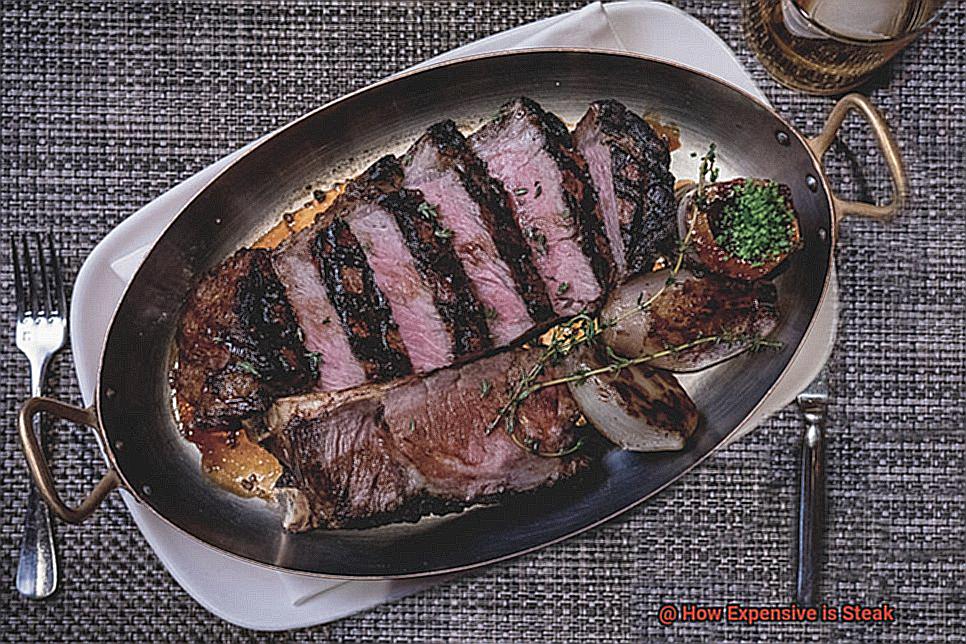
Where to Buy Steak and Its Cost Implications
First off, we have the trusty local grocery store. While it may seem like the most convenient option, keep in mind that the cost of steak can vary greatly depending on the cut and quality. If you’re after a luscious filet mignon, be prepared to fork out a premium price. Conversely, more affordable cuts such as flank steak may be easier on your wallet.
Next, we have specialty meat markets and butcher shops. These havens of carnivorous delight often boast superior quality cuts and a wider selection. However, be prepared to shell out a bit more for that prime meat.
If you’re after convenience and variety, online retailers may be your best bet. They offer an extensive array of cuts and grades of meat, along with the added bonus of doorstep delivery. But bear in mind that shipping costs and special packaging to keep the meat fresh can drive up the final cost.
Last but not least, some restaurants and steakhouses offer retail meat sales. This is a great option if you’re seeking top-notch cuts of meat but expect to pay premium prices.
How to Select Quality Steak at an Affordable Price
There’s no denying that steak is a delicious and satisfying meal, but it can also be quite pricey. Fortunately, with a little knowledge and strategy, it’s possible to select quality steak at an affordable price. Here are five tips to help you choose the best steak without breaking the bank:
Know Your Cuts
Before you head to the grocery store or butcher shop, familiarize yourself with the different cuts of steak and their price ranges. Tenderness and flavor are usually directly proportional to cost, so filet mignon and ribeye will be more expensive than flank steak and skirt steak. But don’t dismiss the latter cuts – they can still be delicious if prepared correctly.
Check the Grade
The USDA grades beef based on factors like marbling, texture, and color. Prime beef is the highest grade and therefore the most expensive, but Choice or Select beef with good marbling can also offer great flavor and tenderness at a lower cost. When shopping for steak, look for bright red meat that is firm to the touch.
Look for Sales
Sales and specials can help you stretch your budget when buying steak. Keep an eye on your local grocery store or butcher shop for discounts on certain cuts of beef, or consider buying in bulk to save money per pound.
Consider Alternative Cuts
If you’re looking to save money on your steak dinner, consider alternative cuts like hanger steak, flank steak, or skirt steak. These may require a bit more preparation or marinating to ensure tenderness and flavor, but they can still be a delicious and affordable option.
Think About the Source
Grass-fed beef may be more expensive than conventional beef, but it can offer a unique flavor profile and nutritional benefits. Look for grass-fed beef that is on sale or try using smaller amounts of it in dishes where it can go a long way.
Tips on Preparing and Cooking Steak
With these tips and techniques, you can prepare and cook a steak that is tender, juicy, and full of flavor.
Choosing the Perfect Cut of Steak
The first step in preparing a delicious steak is choosing the right cut.
Although it might be tempting to opt for a cheaper cut, investing in a high-quality piece of meat can make all the difference in taste and tenderness.
Look for cuts with good marbling, such as ribeye or filet mignon, which will have a more robust flavor and tender texture.
Seasoning for Flavor
Seasoning your steak is crucial to enhancing its natural flavors. A simple mix of salt and pepper on both sides of the steak can do wonders for bringing out its rich taste.
Don’t be afraid to experiment with other spices or herbs, such as garlic or rosemary, to add an extra layer of flavor.
Cooking Techniques
There are several cooking techniques you can try when preparing steak. Grilling is a popular option that can give your steak a nice sear while keeping the inside juicy and tender.
Pan-searing is another method that involves heating a cast-iron skillet until it’s smoking hot before searing the steak on both sides. Whichever technique you choose, make sure your steak is cooked to your desired doneness.
Resting the Steak
After cooking, it’s important to let your steak rest for a few minutes before slicing into it. This allows the juices to redistribute throughout the meat, resulting in a more flavorful and tender final product.
Resist the temptation to cut into your steak right away and give it time to rest for at least 5-10 minutes.
Enjoying Your Perfectly Cooked Steak
Now that you’ve prepared and cooked your steak to perfection, it’s time to enjoy it. Pair it with your favorite side dishes and a glass of red wine for the ultimate indulgent meal. Savor each bite and appreciate the time and effort you put into preparing a delicious steak that was well worth the investment.
Preparing and cooking a steak requires some additional time and effort, but the end result is well worth it for meat lovers. By choosing the perfect cut, seasoning for flavor, trying various cooking techniques, allowing your steak to rest, and savoring each bite, you can achieve the perfect steak every time.
3s4tvVS9VO0″ >
Conclusion
In conclusion, the price of steak varies depending on several factors such as the type of cut, quality, aging process, location of purchase, and market conditions. While premium cuts like filet mignon and ribeye may be pricier, there are still affordable options that deliver excellent taste and tenderness.
To make informed decisions when buying meat products, it’s essential to understand the USDA grading system. You might also want to consider grass-fed beef for its nutritional benefits and eco-friendliness. However, keep in mind that it might be more expensive and require extra effort in the kitchen.
When shopping for steak, you have a range of choices from local grocery stores to specialty meat markets or butcher shops, online retailers or restaurants. Each option comes with different costs based on your budget and preferences for quality and convenience.
Lastly, preparing and cooking a steak requires some additional time and effort but is well worth it for meat enthusiasts.
By selecting the perfect cut of steak, seasoning it for flavor, experimenting with various cooking techniques, allowing your steak to rest before serving it with your favorite side dishes will give you an indulgent meal that was worth every penny spent.

